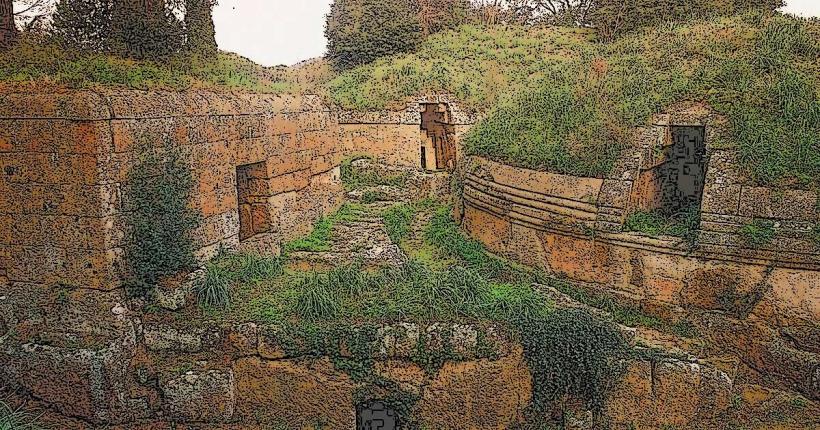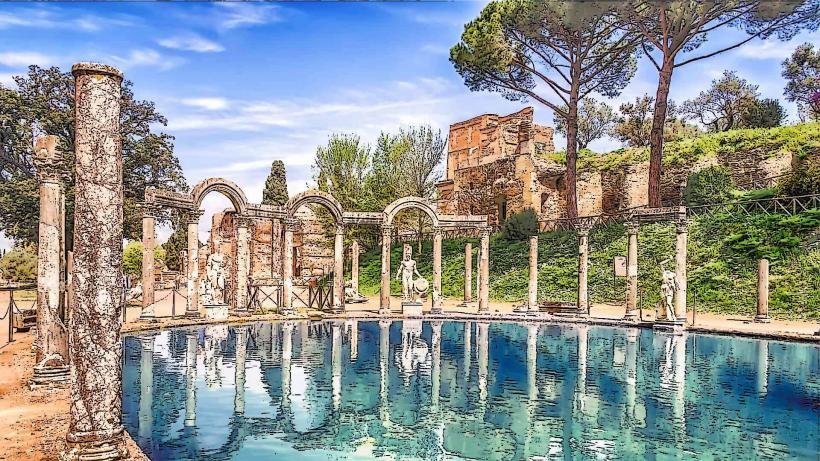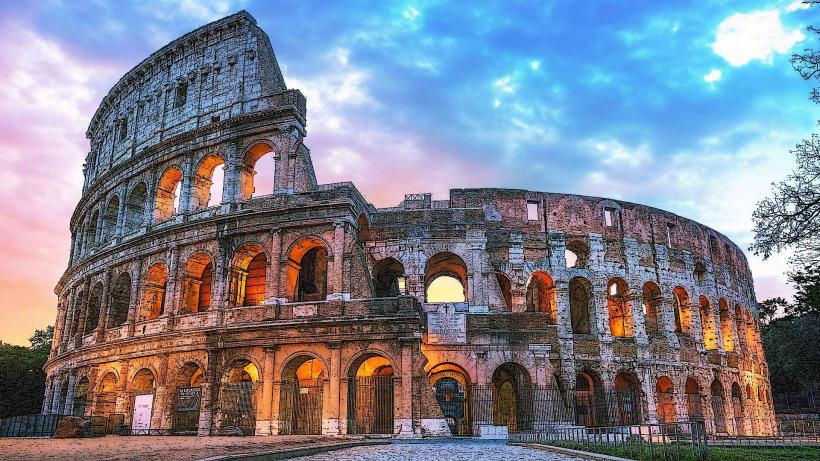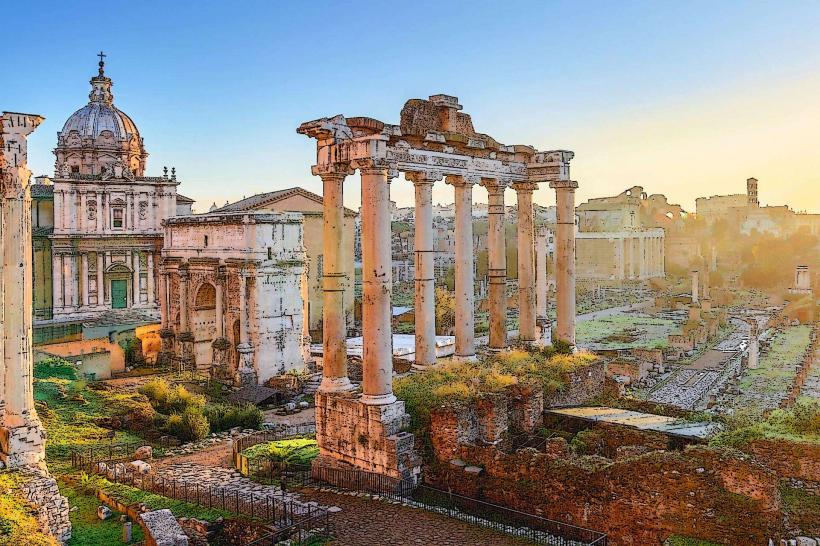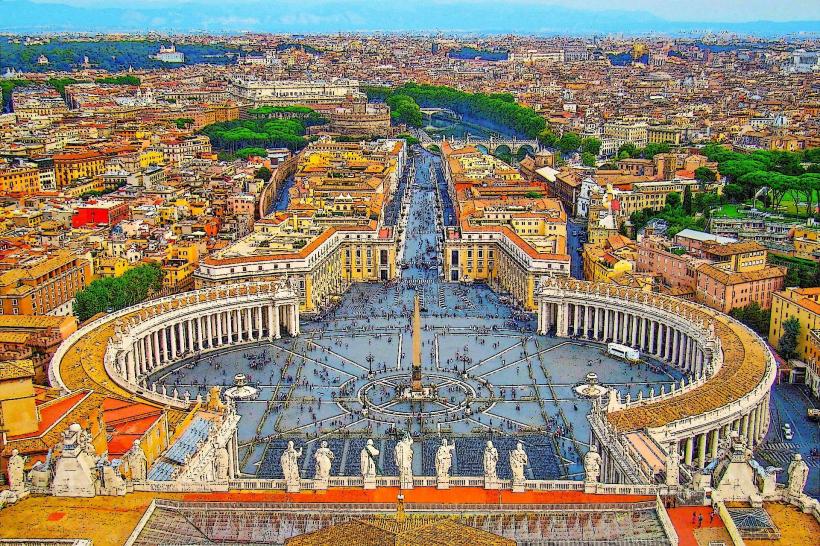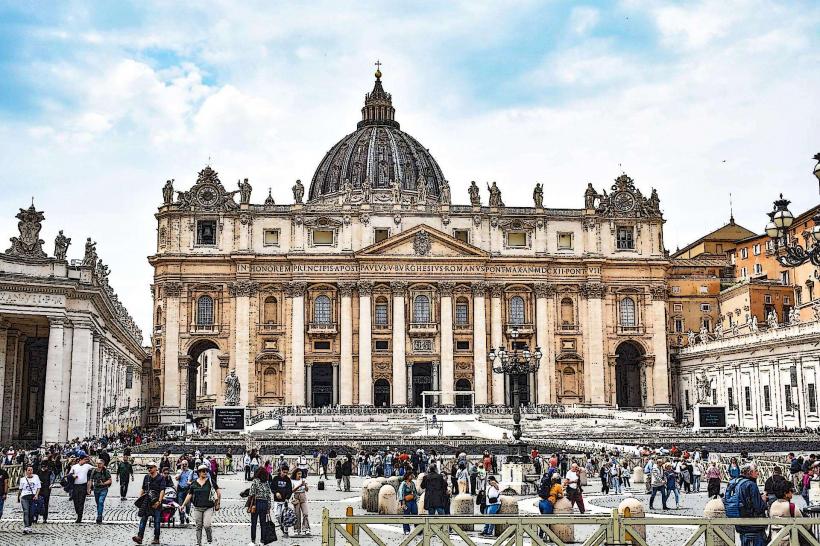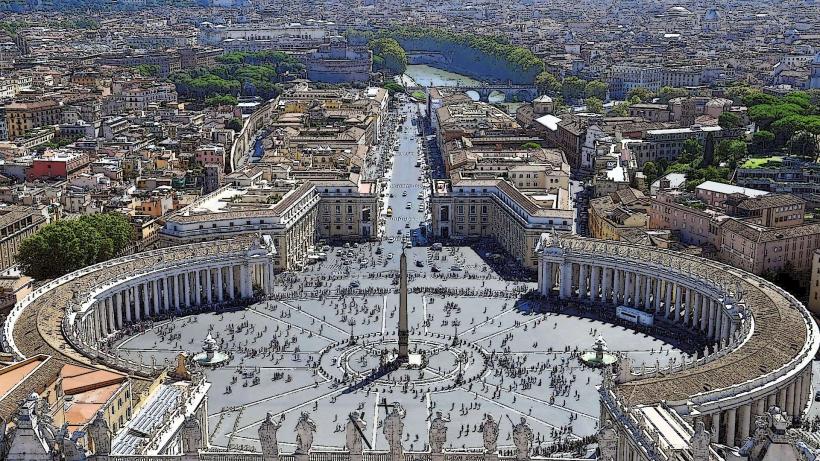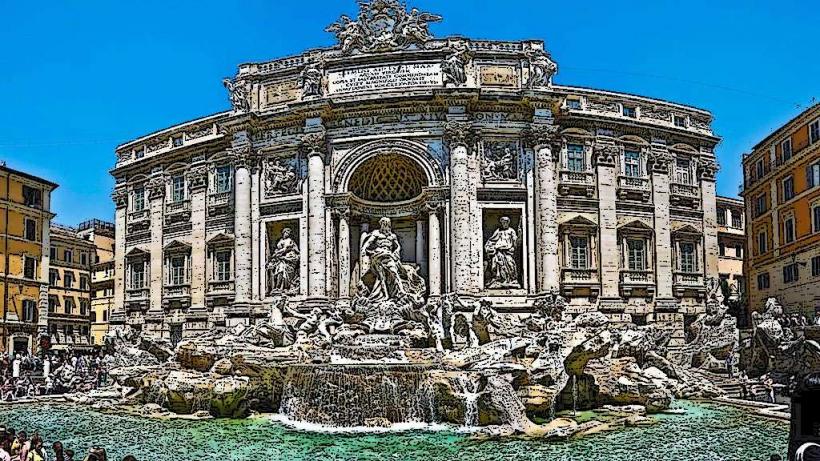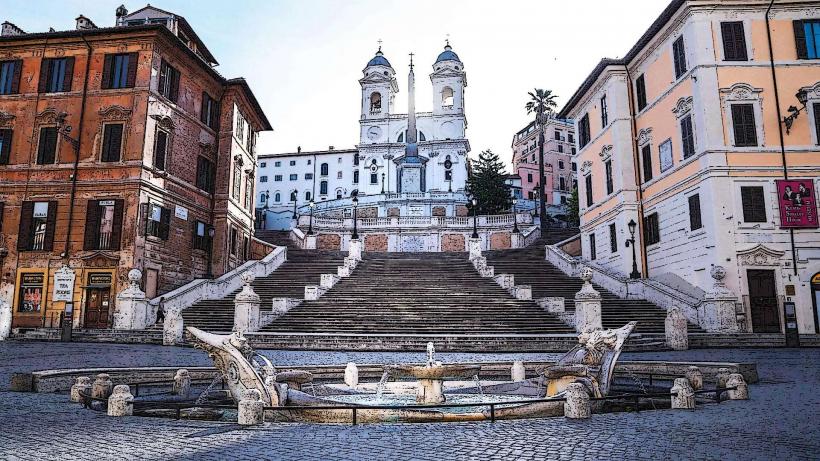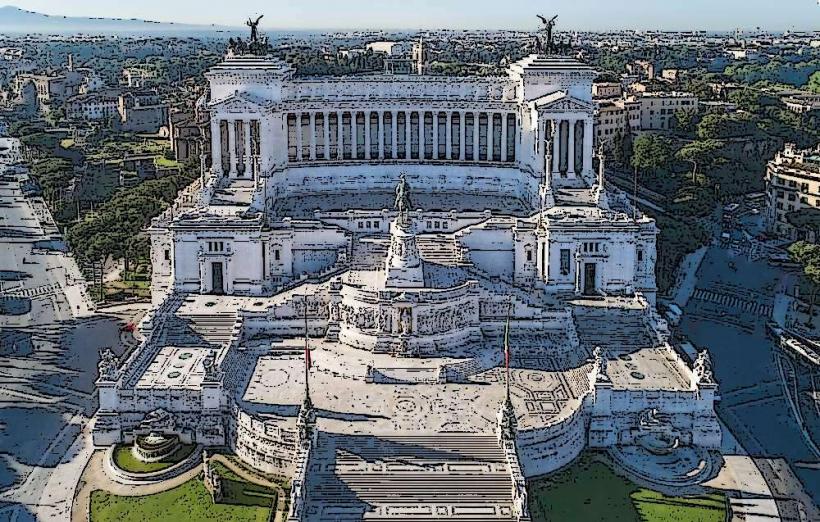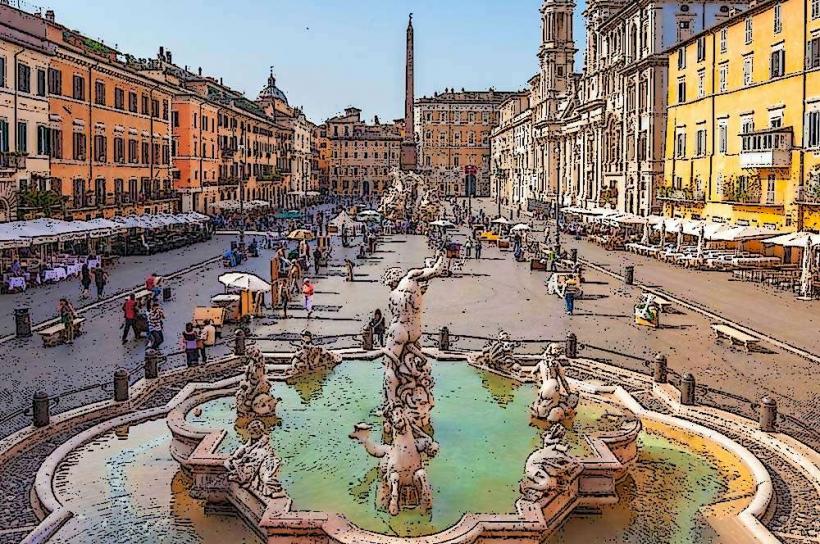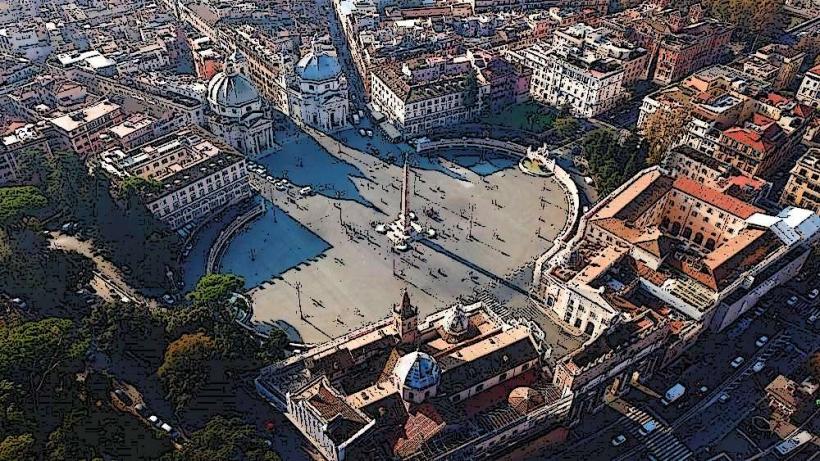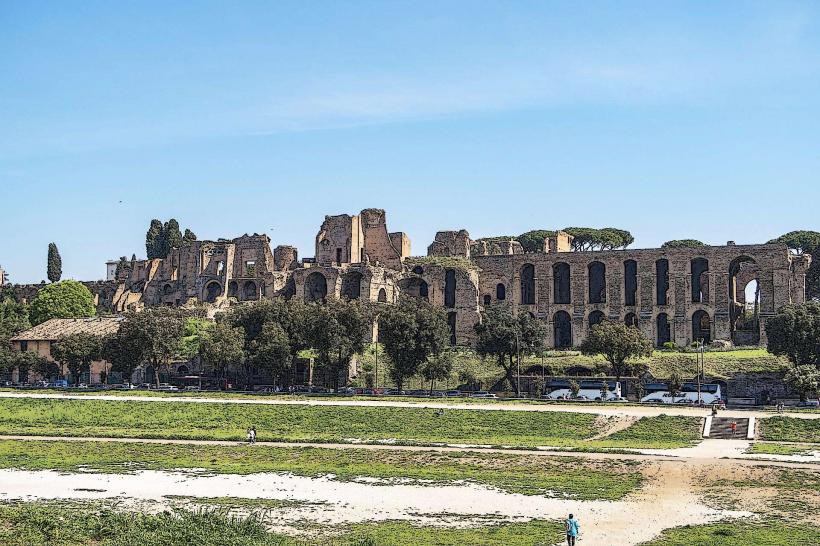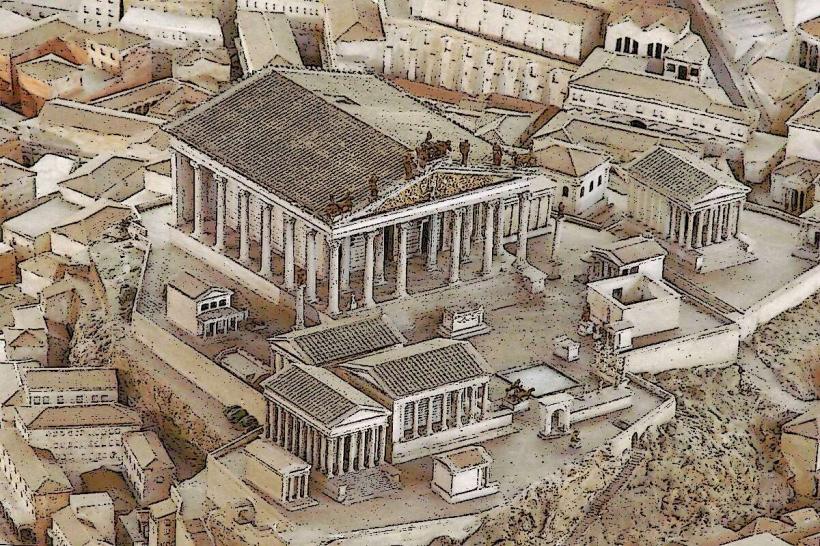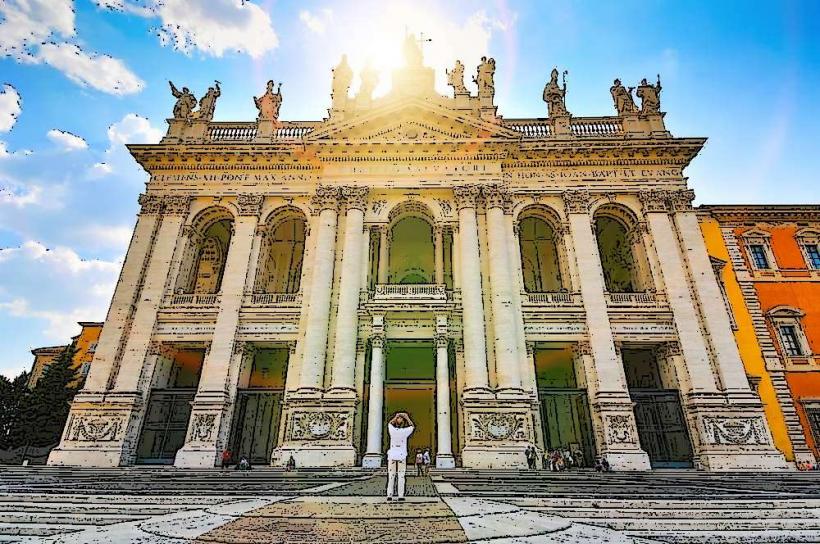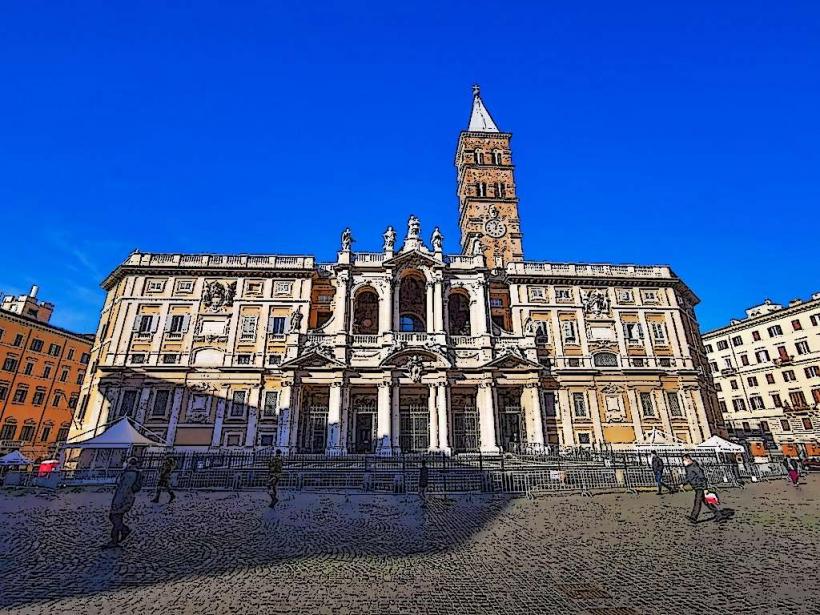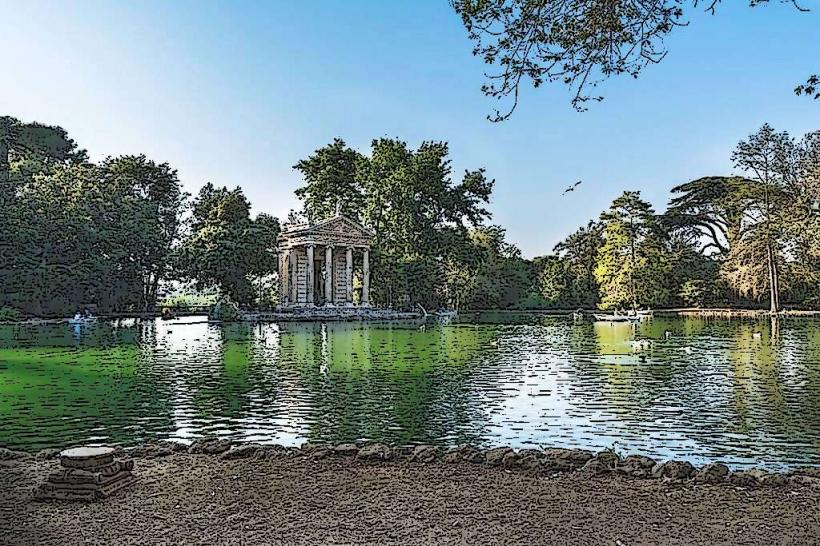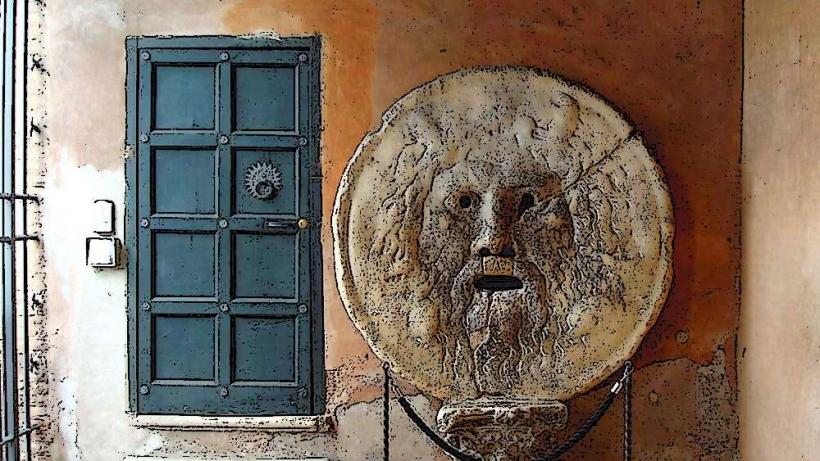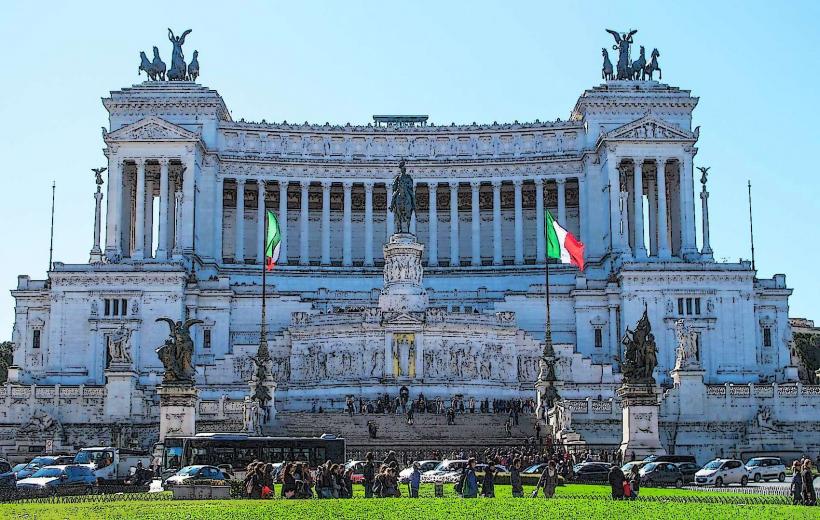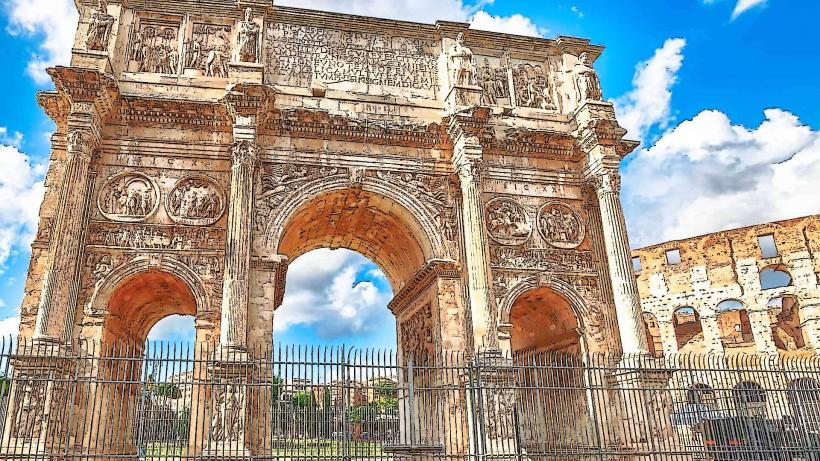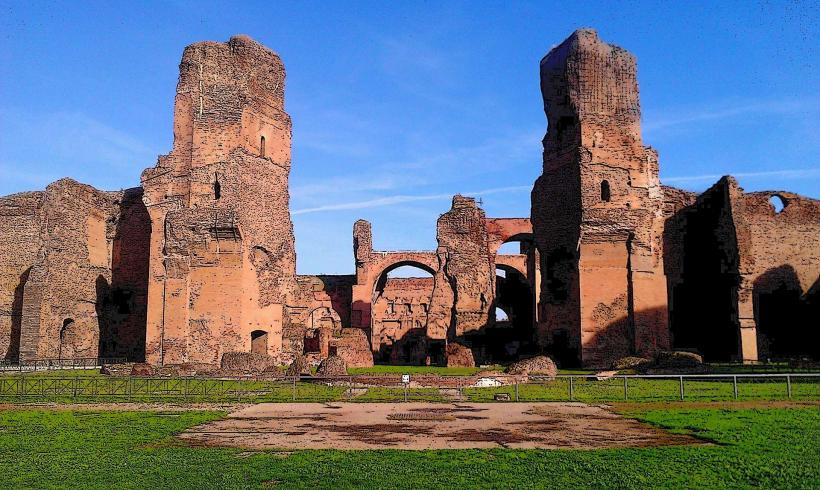Information
Landmark: The Janus ArchCity: Rome
Country: Italy
Continent: Europe
The Janus Arch (Arch of Janus) is a unique and historically significant monument in Rome. Located at the intersection of the Via del Porto di Ripetta and the Via di San Teodoro, it is a Roman triumphal arch dedicated to the Roman god Janus, the deity of beginnings, gates, transitions, and duality. The arch is an important example of Roman architecture from the early 4th century CE, although much about its original function and symbolism remains debated.
1. History and Construction
The Janus Arch was built in around 357 CE, during the reign of Emperor Constantius II, the son of the Roman Emperor Constantine the Great. The arch was likely constructed to commemorate a specific military victory, but the exact event it celebrates is not entirely clear, as the monument itself does not have inscriptions or a clear narrative, unlike other Roman triumphal arches.
The arch is unique because it has four openings (or “faces”), which is relatively rare for Roman arches, especially considering that many triumphal arches only have a single passage. The design is unusual, and it’s thought to reflect the architectural innovation and symbolic representation of Janus—the god of doorways, transitions, and duality.
2. Architectural Features
The Janus Arch is a double-faced structure, with each side containing a central archway flanked by two smaller arches, giving it a total of four openings. This unusual design reflects the symbolic nature of Janus, who is often depicted with two faces—one looking to the future and the other to the past—symbolizing transitions and beginnings.
The Structure: The arch is made from brick-faced concrete, a typical material used by Romans in monumental architecture. The central, larger arch is flanked by two smaller arches on either side. The faces of the arch have no sculpted reliefs or inscriptions, making it a relatively austere structure compared to other more decorated triumphal arches in Rome, such as the Arch of Constantine or the Arch of Titus.
Size: The arch stands at approximately 17 meters (55 feet) tall and 8 meters (26 feet) wide, making it a relatively modest structure in terms of scale when compared to other monumental arches in the city.
3. Symbolism and Function
The arch is dedicated to Janus, the Roman god of gates, transitions, and beginnings. As a deity associated with doors, gates, and transitions, Janus symbolizes both looking backward into the past and forward into the future. His imagery is appropriate for a triumphal arch, which often celebrated a military victory or a significant event marking the transition between two phases, such as peace and war or the reigns of emperors.
The four openings on the Janus Arch may symbolize the god’s dual nature, with each opening pointing in a different direction, representing the transitions between different phases of time or different regions of the empire.
Possible Symbolic Link to Victory: Like other triumphal arches in Rome, it is likely that the arch commemorated a military victory or the success of a particular campaign, although the lack of inscriptions leaves the specifics unclear. The placement of the arch may have marked a gate or a significant entrance to an area in the city, underscoring its association with the idea of beginnings and transitions.
Political and Social Context: The arch may also reflect the political and social changes of the time. Emperor Constantius II was part of the Constantinian dynasty, which ruled during a time of significant political transformation, including the division of the Roman Empire into Eastern and Western halves. The arch may represent the transition of power during this time, symbolizing the renewal or stability that came with the new emperor’s reign.
4. Location and Modern Context
The Janus Arch is located near the Forum Boarium, a historic market area near the Tiber River in central Rome, although its exact original location is not entirely certain. The area was a vital commercial hub during the Roman Republic and Empire, and the arch may have marked a gateway or important junction leading into this area.
Today, the Janus Arch is a relatively obscure monument compared to some of the more famous arches in Rome. It is located near other significant ancient Roman structures, such as the Circus Maximus and the Porta Trigemina, but remains somewhat less visited. Despite this, it stands as an example of Roman engineering and architectural innovation, especially with its unique four arches design.
5. Preservation
The Janus Arch is in relatively good condition compared to many other ancient structures, though time, natural wear, and modern urban development have affected its integrity. The arch is still standing, albeit somewhat altered due to changes in the surrounding area, and remains a testament to ancient Roman engineering.
It has undergone some preservation work over the centuries, especially after the Middle Ages when parts of Rome’s ancient architecture were repurposed for new uses. Some sources suggest that during the Medieval period, parts of the arch might have been incorporated into nearby buildings or fortifications.
6. Significance in Modern Times
The Janus Arch is important for a few reasons:
Symbolic Connection to Janus: The arch’s association with the god of transitions and duality makes it a significant symbolic structure, both in terms of ancient Roman religion and its political implications. It underscores the role of monumental architecture in reflecting and reinforcing Roman values of continuity, power, and order.
Architectural Innovation: The arch’s design, particularly its four openings, sets it apart from other triumphal arches in Rome. It is a relatively early example of the use of multiple openings in triumphal arch design, influencing later structures.
Historical Context: The arch provides insight into the political climate of the 4th century CE, an era of shifting power dynamics in the Roman Empire. It reflects the evolving style and purpose of Roman monumental architecture during the time of Emperor Constantius II.
7. Conclusion
The Janus Arch is a distinctive and fascinating monument in Rome, offering a glimpse into the artistic and political changes of the Roman Empire in the 4th century. With its unique design of four arches, symbolic association with the god Janus, and connection to the imperial triumphs of the era, the arch stands as a testament to Roman engineering and their ability to blend function with meaning in their architectural achievements. Though not as well-known as some of Rome’s other triumphal arches, the Janus Arch remains an important and intriguing relic of ancient Rome’s architectural legacy.

